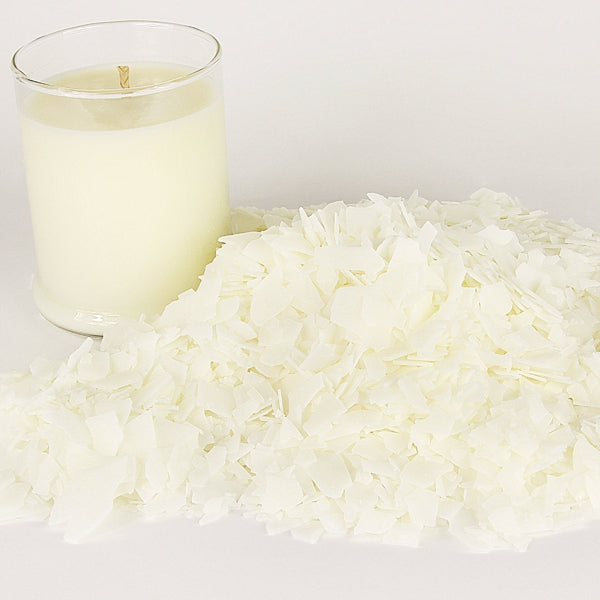Check out the World of Crystal Soy Candles and Home Fragrance Delights
Wiki Article
From Wick to Wax: Comprehending the Chemistry Behind Soy Wax Candles and Their Ecological Influence
As we illuminate our spaces with the warm radiance of candles, there exists a realm of complex chemistry behind the seemingly basic act of lighting a soy wax candle. The selection between soy and paraffin wax prolongs beyond simple appearances, diving right into the realm of ecological impact and the extremely make-up of the materials. Recognizing the molecular framework of soy wax and its combustion process clarifies the emissions released right into our environments. Join us as we unravel the clinical intricacies behind soy wax candle lights and explore their effects on our environment.Soy Wax Vs. Paraffin Wax
When comparing soy wax and paraffin wax for candle making, it is crucial to understand the unique attributes and advantages of each product. Soy wax is an all-natural, renewable energy derived from soybean oil, making it environment-friendly and biodegradable - crystal soy candles. On the other hand, paraffin wax is a result of oil refining, which increases concerns regarding its ecological influence and sustainabilitySoy wax candles melt cleaner and emit much less residue compared to paraffin wax candle lights, making them a much healthier choice for indoor air top quality. Furthermore, soy wax has a lower melting factor, enabling a longer-lasting candle light that distributes fragrance better. Paraffin wax, on the various other hand, tends to burn faster and much less cleanly, possibly launching unsafe chemicals right into the air.
From a sustainability point of view, soy wax is preferred for its biodegradability and renewable sourcing, lining up with the growing consumer choice for eco aware products. While paraffin wax has actually been a typical selection in candle making due to its price and simplicity of use, the change in the direction of green choices like soy wax is getting momentum in the sector.
Chemical Structure of Soy Wax

Combustion Process in Soy Candles
The chemical make-up of soy wax straight influences the combustion procedure in soy candle lights, influencing elements such as burn time, aroma launch, and environmental influence. When a soy candle light is lit, the heat from the fire melts the wax near the wick.
The burning effectiveness of soy candle lights is influenced by the pureness of the soy wax and the top quality of the wick. A clean-burning soy candle with a correctly sized wick will generate a consistent flame and decrease residue formation. This not just prolongs the melt time of the candle light however likewise improves the launch of fragrances. Furthermore, soy wax candle lights have a lower ecological influence compared to paraffin candle lights due to their biodegradable and sustainable nature.

Environmental Benefits of Soy Wax

Thought about a lasting choice to traditional paraffin wax, soy wax offers noteworthy environmental benefits that make it a preferred selection amongst eco-conscious consumers. One significant benefit of soy wax is its eco-friendly sourcing. Soy wax is stemmed from soybean my review here oil, which is mainly cultivated in the United States. The cultivation of soybeans helps support local farmers and reduces the dependency on non-renewable nonrenewable fuel sources made use of in paraffin wax manufacturing. In addition, soy wax is biodegradable, meaning it damages down naturally without releasing hazardous contaminants into the setting. This characteristic makes soy wax candles a much more eco-friendly choice compared to paraffin wax candle lights, which are made from oil, a non-renewable source. Soy wax burns cleaner and generates much less soot than paraffin wax, adding to much better indoor air top quality and lowering the requirement Extra resources for cleansing and upkeep. On the whole, the environmental benefits of soy wax straighten with the expanding need for green and lasting items out there.
Recycling and Disposal Considerations
Recycling and correct disposal of soy wax candle lights play an important function in keeping ecological sustainability and reducing waste in households and communities. When it comes to reusing soy wax candle lights, the initial step is to guarantee that the candle has melted entirely.
In terms of disposal, if recycling is not an option, soy wax candle lights are eco-friendly and can be securely dealt with in many family waste systems. It is always advised to examine with regional recycling centers or waste management solutions for certain guidelines on candle light disposal to make certain correct handling and ecological security.
Final Thought
Finally, the chemistry behind soy wax candles reveals their ecological advantages over paraffin wax candles. Soy wax, originated from soybean oil, burns cleaner and generates much less residue when contrasted to paraffin wax. The combustion procedure in soy candles is extra effective, resulting in a click to investigate much longer and much more also burn. Furthermore, soy wax is naturally degradable and renewable, making it a much more sustainable selection for candle light production. Recycling and proper disposal of soy wax candle lights better add to their ecological impact.When contrasting soy wax and paraffin wax for candle light making, it is crucial to understand the unique features and benefits of each material (soy wax candles).Soy wax candles melt cleaner and release less soot contrasted to paraffin wax candle lights, making them a healthier selection for interior air quality.Taken into consideration a lasting alternative to traditional paraffin wax, soy wax offers significant environmental advantages that make it a prominent choice amongst eco-conscious consumers. Soy wax burns cleaner and generates much less soot than paraffin wax, adding to much better interior air top quality and minimizing the requirement for cleansing and maintenance.In conclusion, the chemistry behind soy wax candles reveals their ecological advantages over paraffin wax candle lights
Report this wiki page